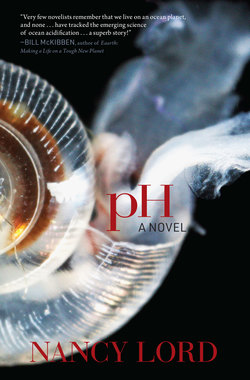pH: A Novel

Реклама. ООО «ЛитРес», ИНН: 7719571260.
Оглавление
Nancy Lord. pH: A Novel
Отрывок из книги
“Sometimes it takes fiction, more than facts, to hear the hard truth. In Nancy Lord’s pH, a cli-fi (climate fiction) novel about climate change and its evil cousin, ocean acidification, we meet likeable and quirky characters dedicated to science and art while trapped in a system seduced by money. I learned a lot from this daring novel. And I laughed. Not a bad way to spend one’s time: buried in creativity, learning and laughing.”
—KIM HEACOX, author of Jimmy Bluefeather and John Muir and the Ice That Started a Fire
.....
The CTD drop at the first station went well. When the bottles were back onboard, the three women took their places on overturned buckets, like milkmaids around a cow, to siphon off samples—carbonate, nutrient, chlorophyll. In the wet lab, Alex had finished assembling his towers and was setting filters in place. Ray passed through to the dry lab, where Nastiya and Marybeth were back to work with samples from the first plankton tow. On their high stools, they peered into microscopes while their hands fluttered with eyedroppers and tally counters.
Ray had now entered his realm, the world of living zooplankton. Though he was dedicated to the study of marine organisms overall, there was nothing that excited him more than the tiny, footed, flagellated, ciliated, bristled, tentacled, transparent creatures, in all their life-cycle stages, all the way up to pulsing jellyfish as large as the reflected moon. It had become a primary goal in his life to encourage as many people as possible to look at his microfauna, to know that they existed. If ordinary people could admire their great beauty, maybe they would want to learn more about them, and maybe they would begin to understand why it was important for such creatures to have a home in the ocean. With his photographs, shot through the lens of a microscope, he was able to capture and enlarge the tiny larval forms of fish, the amphipods, the copepods, the microzooplankton radiolarians with their incredibly intricate mineral skeletons, and the shelled pteropods known as sea butterflies.
.....